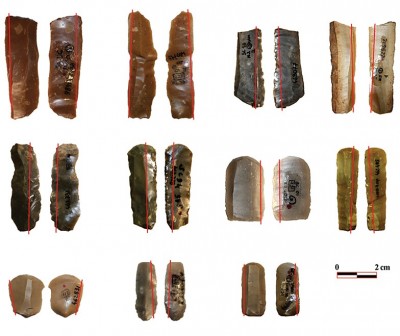Harvest time: crop-reaping technologies and the Neolithisation of the Central Mediterranean
Abstract

Neolithic societies were defined by the development of agricultural economies not only because part of their diet was obtained from cultivated plants, but also because crop-husbandry practices strongly affected people's lifestyles in a variety of ways. It is therefore unsurprising that the development and diffusion of agriculture can be studied from diverse perspectives and with different approaches, by analysing, for example, the macro- and micro-botanical remains of fruits and grains for morphometric and taxonomic variation (Colledge & Conolly 2007) and genetic history (Mascher et al. 2016). Conversely, agriculture can be indirectly assessed through its impact on the environment and subsequent landscape modifications (Zanchetta et al. 2013; Mercuri 2014). Yet another approach explores crop-husbandry practices as reflected in changing technology. New agricultural tasks required the adaptation of existing technologies and the adoption of new tools and practices, including querns, millstones and other grain-grinding equipment, as well as artefacts and structures for grain storage, cooking and processing.
Authors
- Niccolò Mazzucco
UMR 7055 ‘Préhistoire et Technologie’, CNRS-Université Paris Ouest Nanterre la Défense, 21 Allée de l'Université, F-92023 Nanterre cedex, France - Denis Guilbeau
UMR 7055 ‘Préhistoire et Technologie’, CNRS-Université Paris Ouest Nanterre la Défense, 21 Allée de l'Université, F-92023 Nanterre cedex, France - Cristiana Petrinelli-Pannocchia
Dipartimento di Civiltà e Forme del Sapere, Università di Pisa, Via Pasquale Paoli 15, 56126 Pisa, Italy - Bernard Gassin
UMR 5608, TRACES, Université de Toulouse II-Le Mirail, Maison de la Recherche, 5 Allée Antonio Machado, 31058 Toulouse cedex 9, France - Juan José Ibáñez
Institución Milá y Fontanals, Spanish National Research Council (CSIC), Calle Egipcíaques 15, 08001 Barcelona, Spain - Juan Francisco Gibaja
Institución Milá y Fontanals, Spanish National Research Council (CSIC), Calle Egipcíaques 15, 08001 Barcelona, Spain

 Cite this article
Cite this article